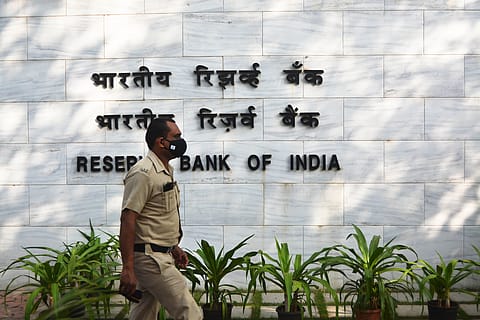Microfinance causing 'debt trap', 'harsh recovery'; needs stringent regulations: RBI Dy Guv
MFIs that account for 70% of loan portfolio not guided by regulations meant to protect customers, says deputy governor Rajeshwar Rao.

Every microfinance institution (MFI) should be guided by the spirit of the regulatory framework that governs the non-banking financial company-MFI (NBFC-MFIs), M. Rajeshwar Rao, Deputy Governor, Reserve Bank of India (RBI), has said. The fact that these rules are not applicable to other MFIs that account for about 70% of microfinance portfolio has led to a non-level playing field posing challenges and difficulties to customers. It has resulted in the emergence of differing practices within the sector, he pointed out.
Addressing the national conference of Sa-Dhan, an RBI recognised Self-Regulatory Organisation for the microfinance sector, Rao says the intent of the rules governing NBFC-MFIs is to make credit available to low income households and protect borrowers from harsh recovery practices of the lender. “While one expected other lenders would also be guided by the regulations applicable to NBFC-MFIs, that has not happened. There are three distinct set of criticisms against microfinance lenders: They lead borrowers into debt trap like situations, charge rates of interest often disproportionate to their funding and operational costs, and deploy harsh recovery methods which lead to distress among borrowers. These issues need to be critically introspected and addressed by lenders to prevent the recurrence of the crisis” says Rao.
According to him, the dynamics in microfinance and concerns around customer protection calls for a review of regulations so that all regulated entities engaged in MFIs pursue the goal of consumer protection within a well calibrated and harmonised setup. The RBI has recently come out with a consultative document on regulation of microfinance to take a holistic view on indebtedness of clients, cap on interest rate and responsible financial practices, he adds.
The annual Bharat Microfinance Report (BMR) of FY 2020-2021 was also released at the Sa-Dhan National Conference. Despite national and local lockdowns due to the pandemic, the microfinance industry clocked a loan portfolio outstanding of Rs 2,52,181 crore as on March 31, 2021, it showed. The report collates data from NBFC-MFIs, banks, SFBs, NBFCs and non-profit MFIs.
“The last financial year was excruciatingly challenging for all. Despite the pandemic, it is heartening to see the industry growing. From July 2021, field collections have been returning to near normal and fresh disbursements have resumed as economic activity picks up pace. Timely help from the government and policy support from the Reserve Bank of India has greatly helped the industry. If we continue with positive growth, industry might touch Rs 3 lakh crores in the current fiscal, if not more. However, there appears to be significant rise in NPAs”, says P. Satish, Executive Director, Sa-Dhan.